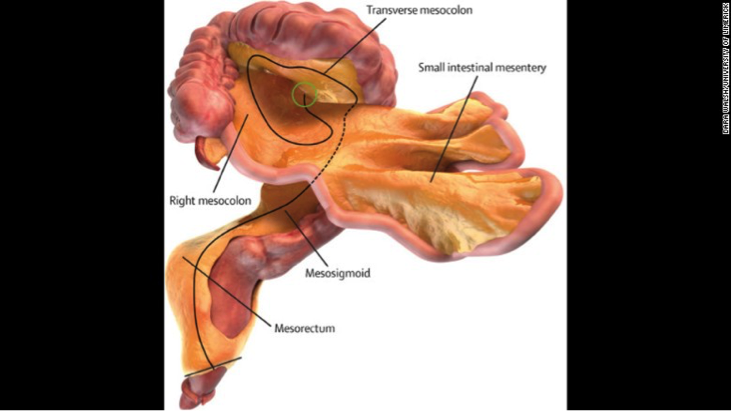An organ you did not know you have
The Foundation Chair of Surgery at the University of Limerick, Ireland has recently discovered that a group of body tissues previously understood as a body system is in fact an organ. It is known as the mesentery, and Dr. J. Calvin Coffey’s new classification will help researchers and scientists reach developments in discoveries of abdominal and digestive diseases.
While a body system is understood as an organized group of tissue that performs a specific function, body organs are made up of tissues and grouped into systems. Some of these include the digestive, nervous and circulatory systems.
Scientists did not always believe the mesentery to be a body system composed of tissue. In fact, Leonardo da Vinci first described the mesentery as an organ in 1885. It was Sir Frederick Treves, a surgeon from Europe who lived around the same time as da Vinci, that had research to back up his assertion that the mesentery was not continuous, but composed of different parts reaching out to the small intestine, transverse colon and sigmoid colon of the large intestine.
The discovery will not only benefit doctors and researchers, but medical students as well. The latest edition of Gray’s Anatomy was updated to include the mesentery’s classification as an organ.
“This was traditionally regarded as a complex field,” Coffey said. “The current anatomic model is elegant and simple and will help students understand this structure.”
The specific purpose of this organ is to carry blood and lymphatic fluid between the intestine and the rest of the body. The mesentery helps maintain the intestine’s position for it to remain connected to the abdominal wall.
“Without a mesentery to keep [the intestine] connected, the intestine would have to attach directly to the body wall,” Coffey said. “It is unlikely that it would be able to contract and relax along its entire length if it were directly in contact. It maintains the intestine in a particular conformation, ‘hitched up,’ so that when you stand up or walk about, it doesn’t collapse into the pelvis and not function.”
Some of the diseases that are believed to be possibly related to this organ include Crohn’s disease, colorectal (colon) cancer, inflammatory bowel disease and cardiovascular disease. Beyond those, mesenteric science also hopes to extend to different health concerns such as diabetes and obesity.
Similar to the way other organs contain their own branch of science, such as how the brain has neurology, this discovery opens up the door for mesenteric science studies to occur.
“For doctors, it provides us with an opportunity to refresh our approach to many diseases such as inflammatory bowel disease and others,” Coffey said. “This could help in identifying the mechanisms underlying these conditions and help us in unraveling their cause and how they develop.”
Advancements in this field will help students, researchers, doctors and patients alike.












